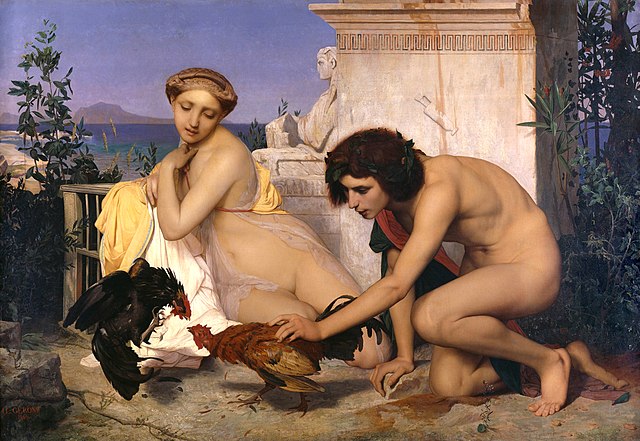Jean-Léon Gérôme was a French painter and sculptor in the style now known as academicism. His paintings were so widely reproduced that he was "arguably the world's most famous living artist by 1880." His range of his works includes historical paintings, Greek mythology, Orientalism, portraits, and other subjects. He is considered one of the most important painters from this academic period. He was also a teacher with a long list of students.
Photograph by Nadar
Birthplace of Jean-Léon Gérôme in Vesoul, France
The Cock Fight (1846; Musée d'Orsay, Paris)
The Age of Augustus, the Birth of Christ, c. 1852–1854, Musée de Picardie
In art history, literature and cultural studies, orientalism is the imitation or depiction of aspects of the Eastern world by writers, designers, and artists from the Western world. Orientalist painting, particularly of the Middle East, was one of the many specialties of 19th-century academic art, and Western literature was influenced by a similar interest in Oriental themes.
Jean-Léon Gérôme, The Snake Charmer, c. 1879. Clark Art Institute.
Eugène Delacroix, The Women of Algiers, 1834, the Louvre, Paris
Unknown Venetian artist, The Reception of the Ambassadors in Damascus, 1511, Louvre. The deer with antlers in the foreground is not known ever to have existed in the wild in Syria.
Professor G. A. Wallin (1811–1852), a Finnish explorer and orientalist, who was remembered for being one of the first Europeans to study and travel in the Middle East during the 1840s. Portrait of Wallin by R. W. Ekman, 1853.








